There is no need to introduce Roma, its director, Alfonso Cuarón, or the company that bought the movie's world distribution rights, Netflix.
After being alerted by French viewers to the appalling quality of the French subtitles - fittingly at a time when discontent with Netflix translations is on the rise on social media - the ATAA (the French Association of Audio-visual Translators) decided to take a look. What we discovered is both shocking and baffling. The disaster is of such a scope that we are obliged to distinguish between content and form: firstly, a list of violations of subtitling conventions and industry practice, then an inventory of translation and adaptation errors, if indeed a word like “translation” still has any meaning in this particular case.
Translated from French by Mariette Kelley & Cynthia Schoch
FORM
- The subtitles for Mixtec dialogue appear between brackets, while those for Spanish are in standard font. Apart from the fact that this confers a different value on each language, it hinders readability and is a convention never used in French subtitles. It would have been conceivable to use two different colors, but that too would constitute a distraction from the story itself. The most logical option would have been to trust the audience to hear the difference and get used to it through the narration.
- Songs are not italicized (although excerpts of a film shown on television are) and are unorthodoxly punctuated.
- The constant use of ellipses "…" at the beginning of subtitles to indicate that the sentence started in the previous subtitle is pointless, hinders readability and is never done in France (or many other European countries).
- Spotting - the technical process that determines when each subtitle will appear and disappear - is inept and seems to be almost random, thus constantly interfering with the image and editing, impairing the flow of the story. Overall, the subtitles are either too long, too short, too early or too late. Every error in the book has been made. One subtitle may combine two unrelated sentences or two sentences that are separated by a significant pause. Countless dialogue subtitles - one speaker on each line, introduced by a hyphen - seem pointless in terms of timing or because the lines don't actually answer one another.
- Missing subtitles in a scene that gives key historical information - during a demonstration, we clearly hear student chants and slogans, but we do not know what is said.
- Subtitles appear when no one can be heard speaking. In scenes depicting great chaos, there are too many subtitles, which makes the scenes unintelligible. As with the image, the director's meticulous work on sound is butchered.
CONTENT
Drawing up an exhaustive list of the spelling mistakes, grammar errors, improper usage, barbarisms, sentences that mean nothing and mistranslations would require copying out virtually all of the subtitles. Below, however, are some highlights of the blunders that Netflix has served up for Mr. Cuarón. And the platform's audience.
A brief anthology of mistakes worthy of grade-school children: “Ne t’avise plus à me chercher”, “J’ai un retard” [for a late period], “Et bien”, “Prends-ça”, “petit-ami”, “Trouvez Dr Vélez” [word missing : “le Dr”], “Regarde la”, “Cleo nous a sauvé” (3 times!).
Neither the style nor register of the original dialogue is respected, and inexplicable variations in tone and register for the same character can also be noted. Maids speak in literary French (about a letter: “Je l’ai alors attrapée et ouverte”; their boss: “Elle reste probablement éveillée”; “Quoi, tu ne viens pas ?”). The worst example being the children, who, in the subtitles, express themselves at times in a register reminiscent of 19th-century French ("Qu’en est-il ?") and at other in sudden and unlikely contemporary slang ("Il se la pète").
On the whole, and contrary to the most elementary principles of translation, words are translated literally one after the other, paying no attention to meaning – something characteristic of machine translation.
More choice morsels:
- “Il m’envoyait toujours des lettres”, instead of simply “Il m’écrivait souvent.”
- "Corto" is translated by "bande annonce" [trailer], when it is simply a short film.
- Flying in the face of all logic, "Adios" is several times translated into French by… "Bye."
- "Avez-vous eu des rapports sexuels ?" for "Empezaste la vida sexual?" while the question actually means, literally, "Vous avez déjà eu un rapport sexuel ?" [“Have you already had sex?”] in other words, "Vous n’êtes plus vierge ?" [You're no longer a virgin?] This mistranslation prevents the audience from understanding what follows.
- During a martial arts class, "un acto" is translated by "un acte,” whereas it is simply “an exercise” or “a position.”
- At the hospital, we read "Prenez leurs informations" although in French we say "Enregistrez-les" or "Inscrivez-les."
- And maybe the most delectable example: "Je vais vous consulter" instead of "je vais vous ausculter" (to consult vs. to examine).
Clearly, for those of us who do not speak Spanish or Mixtec, or who are not used to the Mexican accent (a vast majority of the French audience), the subtitles transform Roma into a tragi-comic farce. Netflix has an impressive advertising steamroller, but, marketing aside, the "subtitling" of Roma sheds a different light on the importance that this distributor gives to the content it airs and the audiences likely to be watching. We have noticed that Netflix corrects some mistakes on the fly, but the new version is seldom better than the first.
In Roma, no emotional moment goes unscathed…
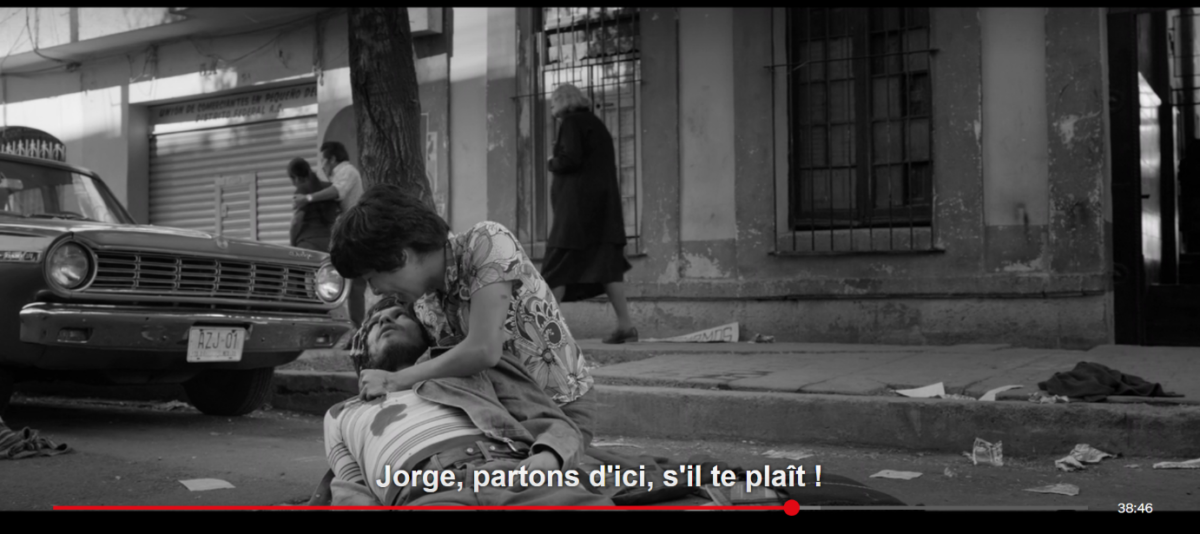
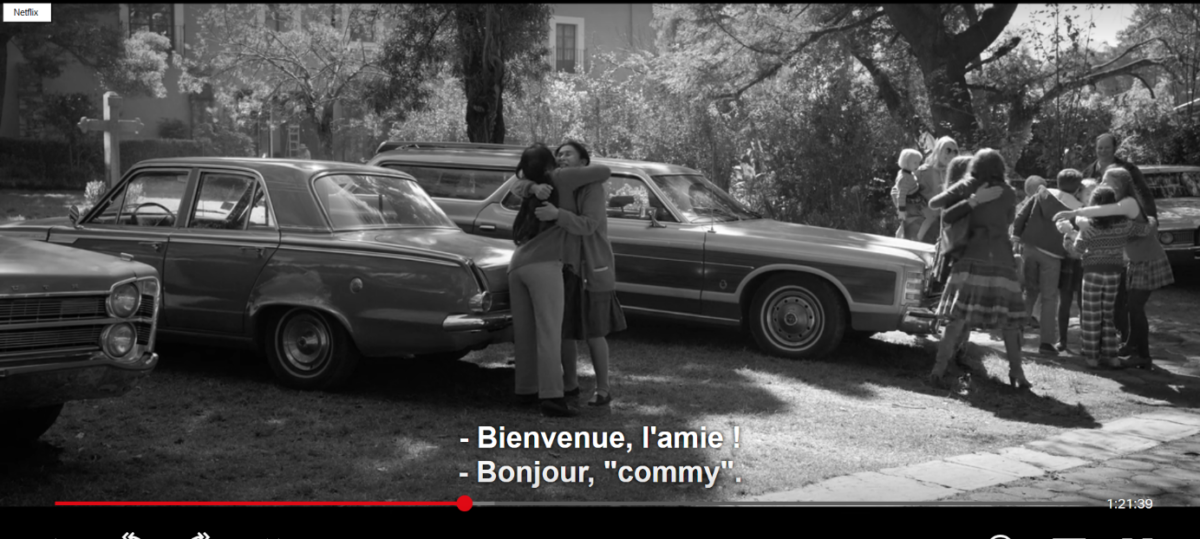
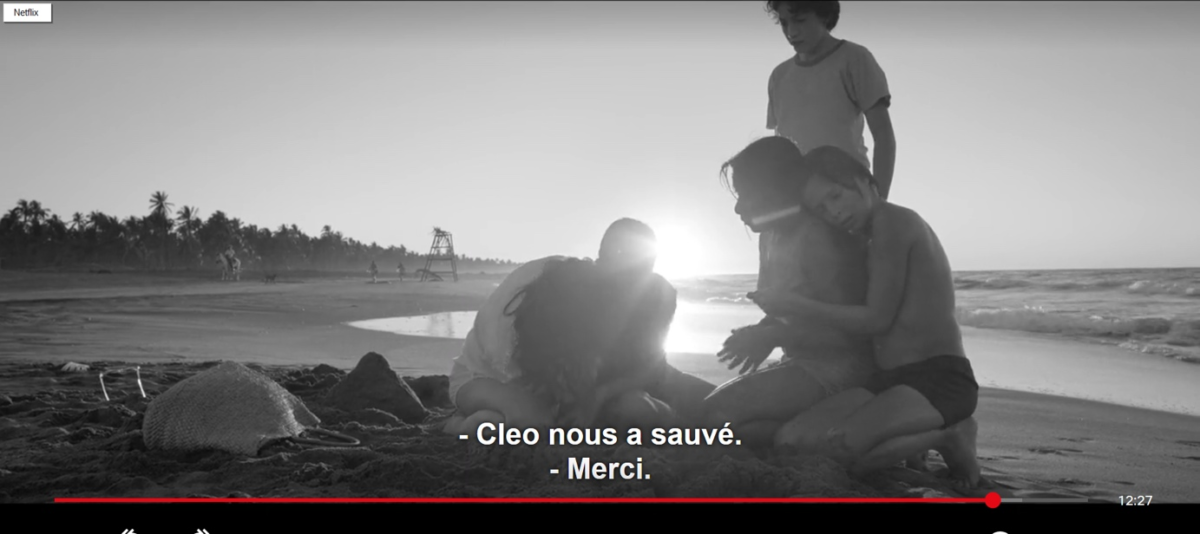
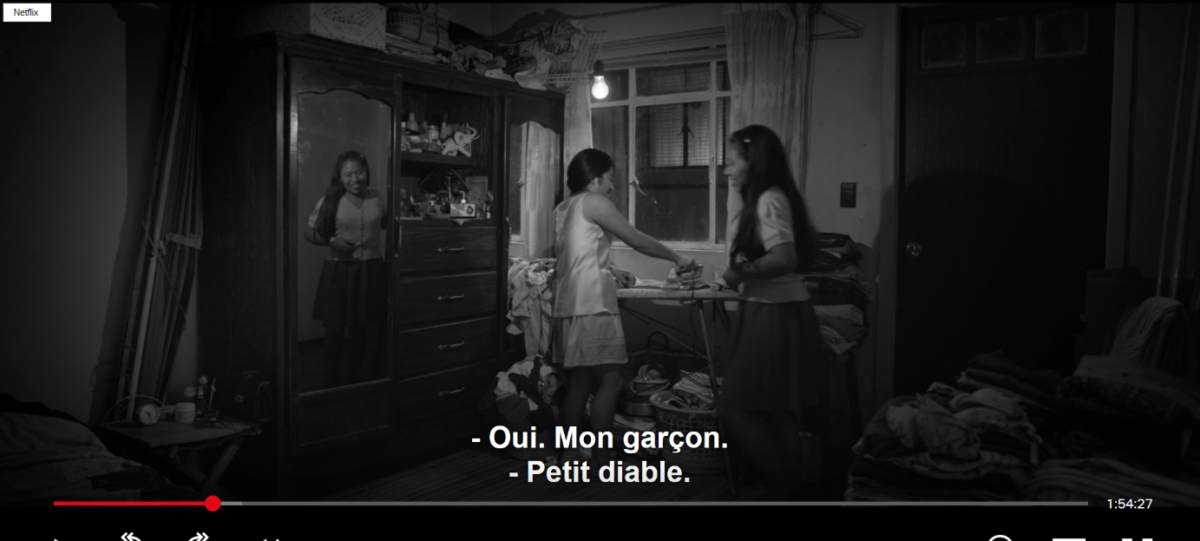
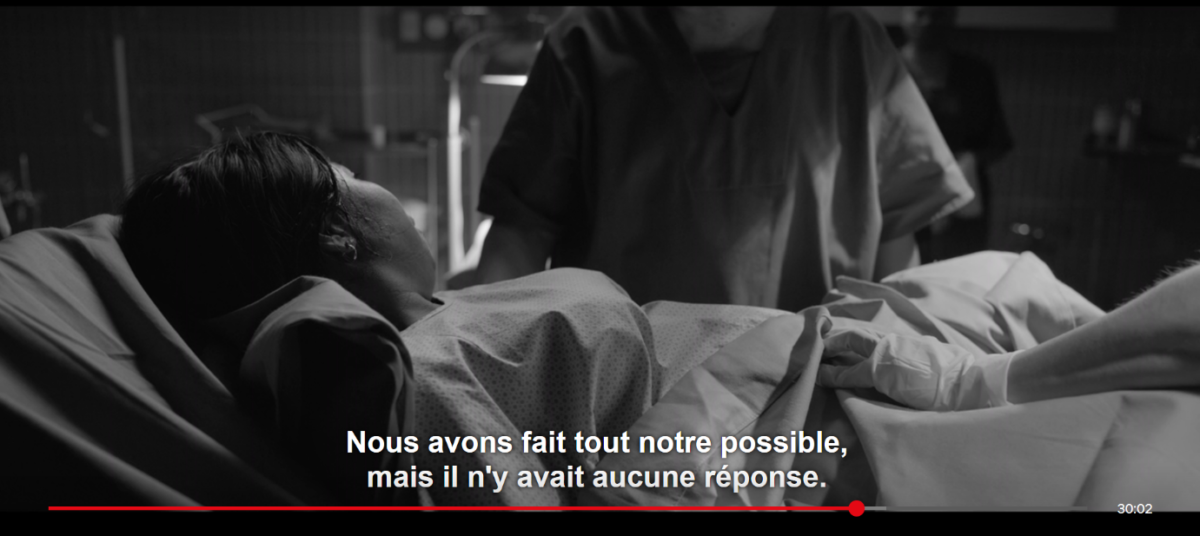

Instances of corrections that were incompetently made raise a compelling question in terms of quality control. Why, once such outrageous errors were reported, wasn’t a complete revision of all the subtitles instantly commissioned? Instead, Netflix seems to blindly stumble from one user complaint to the next.
What can we conclude from these remarks, apart from the fact that the translator was not a professional? That he or she had no access to the images? That he or she worked from the English subtitles instead of the original dialogue? That it is possibly a machine translation, barely read over by a non-professional? That the translation process implemented by Netflix adheres to no professional standards? Or rather that it flouts the most basic expectations of common sense and efficiency? Is there a driver at the wheel?
Speaking of efficiency, Netflix often talks about the rigor of its quality control process. Watching ten minutes of Roma is enough to see that the means and time invested in this so-called quality control would be better used elsewhere. For example, by investing in French professional work methods (tried-and-true after decades of use), which are straightforward and applied across the board, be it for a mini-series aimed at a limited audience or for an American blockbuster:
- the spotting is done by a competent technician;
- the adaptation is written by a professional translator chosen by the film's rights holder;
- the simulation or final check (i.e. watching the film with its subtitles) is done in the presence of a technician, the translator and a representative of the film's rights holder.
This is the standard industry-wide practice. If it is followed, there is no need for any additional quality control.
The French subtitles of Roma beg the following questions: Why didn't Netflix, which spends a fortune on advertising, buying and creating content, hire a professional audiovisual translator to subtitle the movie, just like any other distributor or TV/cable channel, be it for films or series? Why show such contempt for the original work and the audience's language? Could the problem be the same in every other language? Does Alfonso Cuarón, who already criticized the Castilian subtitles, know that his film has probably been butchered on a worldwide scale? What is Netflix's promise to make prestigious directors accessible to wide audiences worth if the translation impairs understanding of the dialogue or turns drama into comedy?
All of these questions deserve answers along with, above all, open and genuinely constructive dialogue between Netflix and translation professionals, as these relentless and unnecessary attempts to reinvent the wheel risk running the film industry into the gutter.
All screen captures (02/18/2019) - © Netflix
